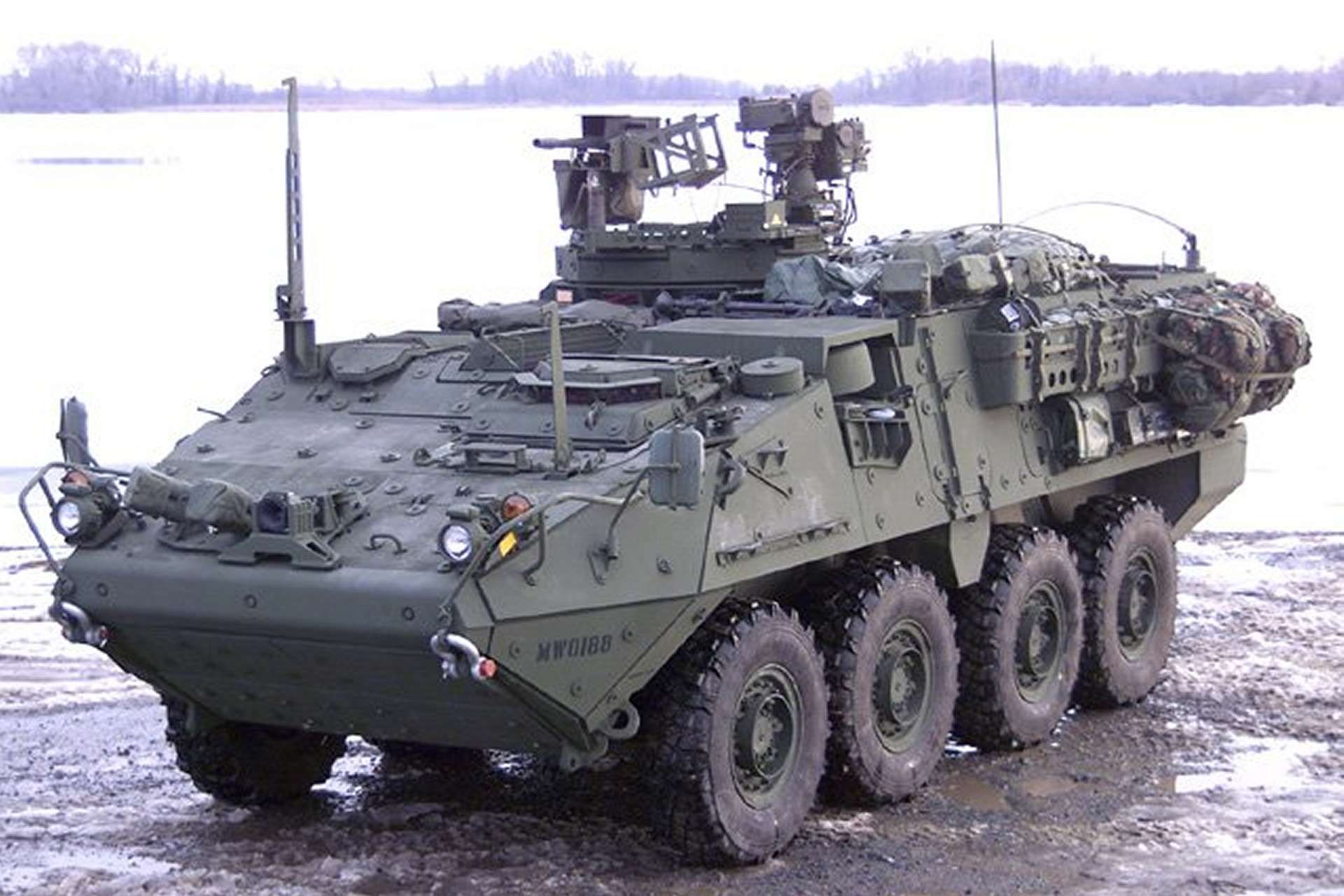Breaking News
Argentine Army Might Choose 8x8 M1126 Stryker as One of Its New Wheeled Armored Combat Vehicles.
The Argentine Army once again finds itself at a crossroads of unresolved decisions regarding the modernization of its Wheeled Armored Combat Vehicles (VCBR) fleet. The reequipment program, meant to incorporate new 8x8 vehicles, is stalled without concrete progress, while technical and strategic choices remain pending.
Follow Army Recognition on Google News at this link

General Dynamics Land Systems M1126 Stryker Armored Personnel Carrier Vehicle (Picture source: Wikimedia)
For several years, the preferred option appears to be the NZLAV/M1126 Stryker, touted for various qualities suited to local needs. However, the absence of an official decision has prompted authorities to consider other alternatives, notably the Pandur II armored vehicle family. Initially developed in Austria by Steyr-Daimler-Puch, now a subsidiary of General Dynamic European Land Systems, and currently produced under license by Tatra Defence Vehicle in the Czech Republic, the Pandur II stands as a robust option, already deployed in several international armies.
The proposal to integrate the Pandur II is based on comprehensive feasibility studies, suggesting a possible adaptation to the specific requirements of Argentina. Concurrently, discussions about the Stryker remain predominant, despite concerns about the logistics and adaptability of older equipment that could complicate operational support in the long term.
Criticism is abundant, particularly regarding the viability of integrating used NZLAVs. Their condition and equipment, considered obsolete by some, raise concerns about their future effectiveness. Additionally, the logistical diversity between the LAV III platforms of the NZLAV and the Stryker poses an additional challenge.
This context of uncertainty is not isolated to the army. The entire Argentine armed forces face similar delays in several key reequipment programs, exacerbating capability gaps in the face of increasingly pressing national security challenges. In this climate of waiting and indecision, the future of the VCBR program remains uncertain, placing the Argentine Army in a delicate position facing regional and global challenges.


























